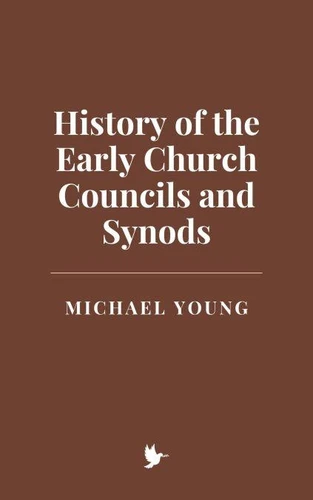History of the Early Church Councils and Synods
Par :Formats :
Disponible dans votre compte client Decitre ou Furet du Nord dès validation de votre commande. Le format ePub est :
- Compatible avec une lecture sur My Vivlio (smartphone, tablette, ordinateur)
- Compatible avec une lecture sur liseuses Vivlio
- Pour les liseuses autres que Vivlio, vous devez utiliser le logiciel Adobe Digital Edition. Non compatible avec la lecture sur les liseuses Kindle, Remarkable et Sony
 , qui est-ce ?
, qui est-ce ?Notre partenaire de plateforme de lecture numérique où vous retrouverez l'ensemble de vos ebooks gratuitement
Pour en savoir plus sur nos ebooks, consultez notre aide en ligne ici
- FormatePub
- ISBN8230785781
- EAN9798230785781
- Date de parution14/01/2025
- Protection num.pas de protection
- Infos supplémentairesepub
- ÉditeurIndependently Published
Résumé
As Christianity expanded across the Roman Empire in the first few centuries after Christ's death, it faced not only external opposition but also internal theological disputes. These disputes arose in part because the fledgling Christian faith had to contend with the diverse religious, philosophical, and cultural environments it encountered, from the syncretistic Hellenistic world to the traditions of Judaism.
As Christianity spread, so too did a variety of interpretations about the nature of God, Christ, salvation, and the relationship between the Church and society. Early Christians, attempting to stay true to the teachings of Jesus and the Apostles, found themselves in constant theological debates, giving rise to various heresies, which threatened the unity and orthodoxy of the Church. The rise of heresies created a pressing need for the Church to establish clearer boundaries around orthodox Christian belief.
The early Christian response to these theological challenges was not immediate, but over time, Church leaders began to recognize the need for more formal structures of authority to deal with heretical teachings. The first efforts to confront heresy on a broader scale were local synods and councils, where bishops and elders would gather to address specific doctrinal disputes.
As Christianity spread, so too did a variety of interpretations about the nature of God, Christ, salvation, and the relationship between the Church and society. Early Christians, attempting to stay true to the teachings of Jesus and the Apostles, found themselves in constant theological debates, giving rise to various heresies, which threatened the unity and orthodoxy of the Church. The rise of heresies created a pressing need for the Church to establish clearer boundaries around orthodox Christian belief.
The early Christian response to these theological challenges was not immediate, but over time, Church leaders began to recognize the need for more formal structures of authority to deal with heretical teachings. The first efforts to confront heresy on a broader scale were local synods and councils, where bishops and elders would gather to address specific doctrinal disputes.
As Christianity expanded across the Roman Empire in the first few centuries after Christ's death, it faced not only external opposition but also internal theological disputes. These disputes arose in part because the fledgling Christian faith had to contend with the diverse religious, philosophical, and cultural environments it encountered, from the syncretistic Hellenistic world to the traditions of Judaism.
As Christianity spread, so too did a variety of interpretations about the nature of God, Christ, salvation, and the relationship between the Church and society. Early Christians, attempting to stay true to the teachings of Jesus and the Apostles, found themselves in constant theological debates, giving rise to various heresies, which threatened the unity and orthodoxy of the Church. The rise of heresies created a pressing need for the Church to establish clearer boundaries around orthodox Christian belief.
The early Christian response to these theological challenges was not immediate, but over time, Church leaders began to recognize the need for more formal structures of authority to deal with heretical teachings. The first efforts to confront heresy on a broader scale were local synods and councils, where bishops and elders would gather to address specific doctrinal disputes.
As Christianity spread, so too did a variety of interpretations about the nature of God, Christ, salvation, and the relationship between the Church and society. Early Christians, attempting to stay true to the teachings of Jesus and the Apostles, found themselves in constant theological debates, giving rise to various heresies, which threatened the unity and orthodoxy of the Church. The rise of heresies created a pressing need for the Church to establish clearer boundaries around orthodox Christian belief.
The early Christian response to these theological challenges was not immediate, but over time, Church leaders began to recognize the need for more formal structures of authority to deal with heretical teachings. The first efforts to confront heresy on a broader scale were local synods and councils, where bishops and elders would gather to address specific doctrinal disputes.























